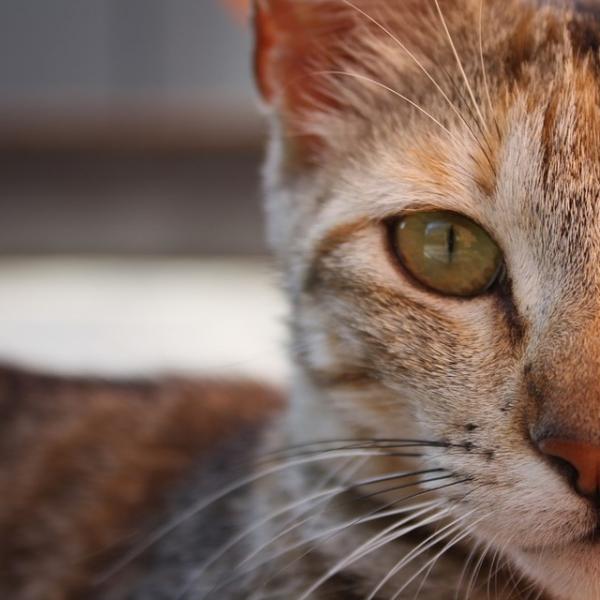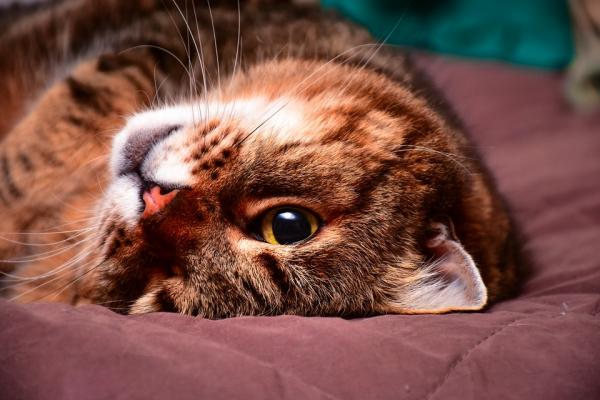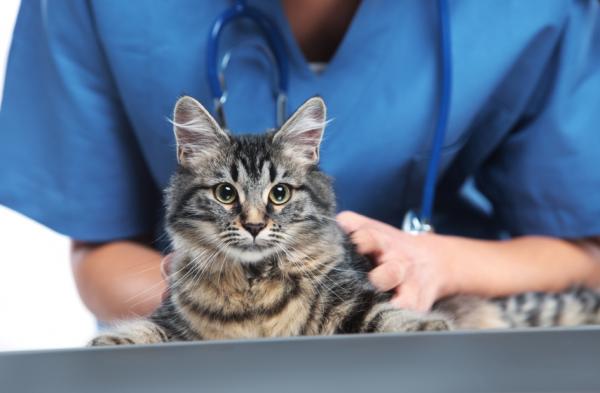Seizures in cats – Causes and what to do

In we know that taking care of your cat’s health is essential so that it has the quality of life that it deserves so much. The cats are usually strong and resistant animals, not prone to diseases. However, this does not mean that you should lower your guard against any strange behavior.
That a cat convulses is a situation that generates high levels of discomfort in his human companions, because it is a very distressing situation to witness. It is also for our cat, who does not understand what happens to him. However, keep calm, help at the time and go to your veterinarian It is the indelicate way to help him. That’s why we want to talk to you about the seizures in cats, causes and what to do when they occur In this way you will know how to face this problem in the most appropriate way.
What are seizures?
It is a series of Repetitive and uncontrollable movements, produced by an alteration of the normal functioning of brain activity. A simple way to explain the process is to say that they are caused when the neurons, responsible for carrying the electrical impulses through the nervous system, receive a greater excitation than they can withstand, causing abnormal electrical discharges in the brain as a result of the excessive stimulation.
When the brain receives such abnormal discharges, it responds with the obvious signs of a seizure. The danger lies not only in the attack itself, but can also cause brain damage and affect other organs, such as the lungs. Because of this, an early diagnosis and a timely treatment are crucial to avoid lethal consequences.
Seizures are not common in felines, and are usually presented as symptom of another pathology. Do not confuse them with epilepsy. Epilepsy occurs by itself and is for life, without presenting another disease that may influence its appearance; On the contrary, seizures are accompanied by other ailments and are the product of them, although they may not completely disappear with the treatment, despite the fact that it is possible to control them.

Causes of seizures in cats
There are many disorders that may have as a symptom convulsions in cats, then we explain what they are:
- Diseases infections: toxoplasmosis, encephalitis, meningitis, peritonitis, among others.
- Congenital deformities: hydrocephalus, et cetera.
- Trauma in the head.
- Diseases cerebrovascular
- Poisoning: with insecticides, poisons against pests, antiparasitic for external use, products for the home with toxic and dangerous labels.
- Diseases of metabolic origin: hypoglycemia, pathologies in the thyroid, liver problems, among others.
- Tumors cerebral.
- Rage.
- Use of certain drugs.
- Deficiency Thiamin.
- Leukemia Feline
- Presence of certain parasites that have migrated abnormally in the cat’s body.
- Immunodeficiency Feline
Symptoms of seizures
In felines, seizures they come in different ways. In some cases, the symptoms are quite obvious, while in others the signs may be difficult to detect. The most common signs are:
- Uncontrolled movement of the legs
- Rigid body
- Loss of consciousness
- Uncontrolled chewing
- Fall to one side
- Salivation
- Defecation and urination
The crisis can last from 2 to 3 minutes, and before it, the cat can try to attract the attention of humans or, on the contrary, hide. This type of episodes are simple to identify, although others can also occur with milder signs, manifesting themselves in behaviors such as persecuting the tail in an obsessive manner, uncontrolled movement of the factions and persecution of something that is not there, among others. In these cases, the cat only loses consciousness of what happens in a partial way. Any type of abnormal behavior must be consulted with the veterinarian immediately.

What to do during the attack?
When an episode of convulsions occurs in the cat it is necessary that you are prepared to know what to do, because some mistake will cause the feline or you get hurt, or that the attack lasts longer. That’s why we recommend you:
- Keep calm: Avoid crying, make a loud sound and even talk to him, because this type of stimuli can excite the nervous system of the cat even more.
- Remove any object that could hurt the cat, but avoid touching it, because it could bite or scratch you since you will not have awareness of what it does. You should only touch it if you are in danger of falling from somewhere, in which case we recommend you take it with a towel and place it on the floor or manipulate it with some kitchen gloves.
- Remove any sound that may exist in the environment, such as television or music, turn off the lights and even close your windows if intense sunlight enters.
- Do not wrap the cat if it is not necessary or expose it to the heating heat.
- Do not try to give water or food, do not offer them to them when the tremors have stopped.
- Never self-medicate your cat, Only a veterinarian can tell you how to proceed in the future.
- Once the attack is over, take it to a cool place under your supervision and Get in touch with your veterinarian.

Diagnosis
In order for the diagnosis to be satisfactory, you must provide the veterinarian all the information about the signals that you have been able to detect, this will help you to know which are the most adequate exams to detect the root of the problem. The diagnosis is aimed at determining if it is epilepsy or seizures, and what could be causing them. In this sense, it can include:
- Complete clinical history: information on all diseases, traumas and various diseases of the cat throughout its life. Vaccines administered and medications used.
- General physical examination.
- Neurological studies
- Electroencephalograms, electrocardiograms, radiographs and magnetic resonances, among others.
- Analysis of urine and blood.
Of course, not in all cases will it be necessary to perform each of these medical studies.

Treatment
The treatment for seizures is focused on both reduce the frequency and intensity of them, as a eradicate what causes it. Of course, according to the cause a specific treatment will be necessary, which must be prescribed by your veterinarian.
With respect to seizures, phenobarbital is usually used in animals to prevent seizures, and diazepam to control them when they occur. However, the drugs must be prescribed by your doctor, as well as the doses and frequency thereof. These two specific components can not be used in cats with liver problems.
Usually, medications must be administered for life, always at the same time and in the same dose. Seizures may recur, but the animal will be able to lead a normal life if the veterinarian’s recommendations are followed.
An early diagnosis and the continuity of the treatment can considerably improve the cat’s condition, but the longer it is expected to consult with the specialist, the worse the final prognosis, reducing the chances of the cat leading a normal life and increasing the risk that the cat will Convulsive episodes occur more frequently.
As an extra recommendation, it is best that you consider that from now on your cat does not leave home, to avoid suffering an attack while abroad, exposing himself to dangers of all kinds in the face of which you will not be able to help him.

This article is merely informative, in .com we do not have the faculty to prescribe veterinary treatments or make any kind of diagnosis. We invite you to take your pet to the veterinarian in case of any type of condition or discomfort.
If you want to read more articles similar to Seizures in cats – Causes and what to do, we recommend that you enter in our section of Other health problems.


